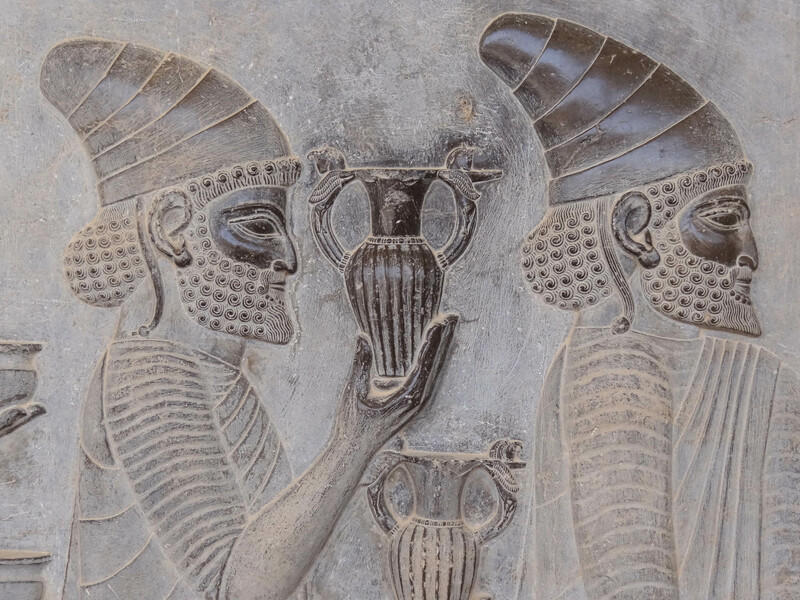Persepolis
Type:
Sculptures,
Palace complexes
Date:
First half of the sixth century BCE
Location or Findspot (Modern-Day Country):
Iran
Dimensions:
The Apadana (the great audience hall and portico) at Persepolis has a surface area of 1000 square meters
Description:
In 331 BCE, Alexander "the Great" captured and looted the Achaemenid capital of Parsa, better known as Persepolis (Greek for "city of the Persians"), setting fire to the palace complex associated with Darius I (522–486 BCE) and his successors. This ancient city had fortification walls, a great gate, a monumental stairway, a hypostyle hall, and relief-decorated palatial buildings. The reliefs of the Apadana were uncovered during excavations in the early 1930s. They depict Persian courtiers, the court entourage, imperial subjects bearing tributes for the king, and images of lions attacking bulls (a popular visual metaphor for one great power conquered by an even greater power). The rock-cut tombs of the Achaemenid rulers at Naqsh-e Rostam are 6 km to the north.
Relevant Textbook Chapter(s):
1
Repository and Online Resources:
Visit the page on Persepolis on UNESCO's World Heritage List.
Image Credits:
Wikimedia Commons; Navid Jamali




